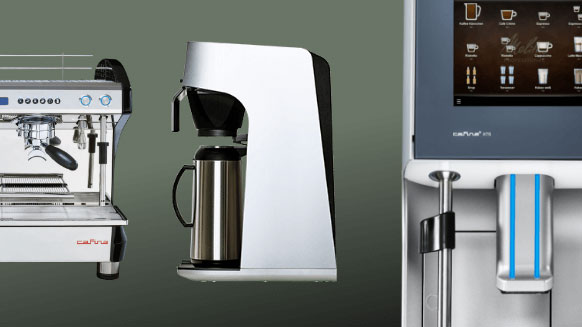Olfaction – Consciously drinking and smelling coffee: practice makes perfect!
The term olfaction – from the Latin “olfacere” (to smell) – refers to the perception of smells via receptors in the nasal cavity. These odor receptors of the olfactory epithelium, located in the mucous membrane, can perceive chemical stimuli.
The perception of smell is the most differentiated and complex aspect of perceiving the overall taste – thousands of different aromas can be recognized and identified.
Everyone knows the situation of smelling or tasting something and not being able to describe or name it. The most important thing to do first, therefore, is to find out what emotion the smell evokes and to use this emotional base to find an image associated with the smell or taste. This is the only way to be able to describe aromas with word associations.
But once again – practice makes perfect. So just “sniff” something a bit more consciously next time and then simply talk about the aromas you perceived.
Here at the Coffee Consulate, we spent many years developing a descriptive system, comprising a coffee aroma wheel with 11 aroma groups and several sub-groups, which greatly simplifies and systemizes the description of coffee. To provide an easy introduction to the topic, we offer workshops on aromas, sensory perception and cup tasting – and of course aromas and their description are one of the main focus areas.
Just try it!
Simply taste a cup of coffee using all your senses and keep a flavor profile by your side. Here’s ours:
http://www.coffee-consulate.com/images/pdf/flavourprofil/ccflavourprofildeu.pdf
When you consciously drink and smell the coffee, you can concentrate on the various groups – like the individual instruments in an orchestra. The flavor profile is an excellent tool for providing orientation during this process. Give it a try!
The approximately 30,000,000 olfactory cells used to perceive smells die every 30 to 60 days and are replaced by new cells. Odorous substances collect in the olfactory mucous membrane, causing the sensory cells to depolarize and thus transmit a signal. Up to 1,000 olfactory cells of the same type from different regions of the olfactory epithelium are joined together.
The olfactory organ of humans is located on the roof of the nasal cavity and has about 400 different odor receptor types which can perceive different odorous substances (different molecules). All these substances are volatile, i.e. have a low molecular weight of under 300g/mol. Smells are detected by the common activation of several receptor types. Sensory cells of one type are excited by chemically similar substances.
Odors are perceived both orthonasally (from the front through the nasal cavity) and retronasally (from behind through the pharynx into the nasal cavity). Orthonasal perception is used more for the water-soluble, light aromas, while retronasal perception is more for fat-soluble, heavy aromas.
The acquisition and transmission of smell perception occurs in different ways:
-
Memory (remembering a place or situation) (direct way) via archaic brain areas
-
Emotion / Motivation (direct way) via brain areas processing emotions (limbic system)
-
Smell identification (indirect way) via frontal brain areas with links to the speech centers
You will experience coffee – and also other food and drinks – much more consciously now, helping you to also perfect the coffee preparation process.







